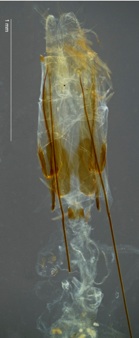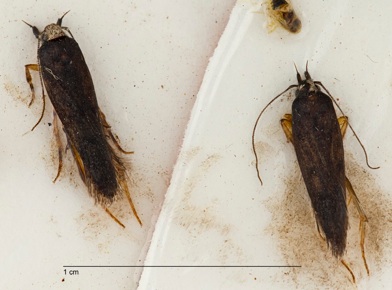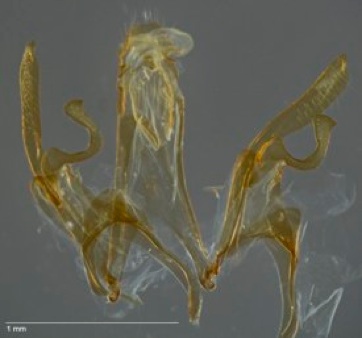FACT SHEET




Family Gelechiidae
RECOGNITION
Diagnostic features. Although the labial palps may be mottled, they lack distinct banding. The terminal segment of the palp is usually much thinner than the preceding segment, appearing like a stylet. The hind wing distal margins have a sigmoidal or “s-shaped” curve similar to the pink bollworm.
How to distinguish from the pink bollworm:
These moths look the most like the pink bollworm. Some of them have noticeably white scales on the head which makes them easy to tell apart from the brownish-grayish scales of the pink bollworm, but others have more drab colors. To the experienced eye, the terminal segment of the labial palps are thinner than the pink bollworm, but this can be hard to see without lots of specimens to compare. The surest way to diagnose this species is by dissecting out the genitalia. Many of these moths are females with long, thin rods extending through the end of the abdomen. The males have many long, thin projections on the valvae, unlike the pink bollworm whose valvae are broad.
Gelechia sp.
Gelechia sp. genitalia, dissected and cleared. A. male, B. female
Scale bars = 1 mm. Photo credit: Wendy Moore

Gelechia species are unusual in that both males and females are attracted to the DELTA traps.
Scale bar = 1 cm.
Photo credit: Wendy Moore
A
B
ECOLOGY
To our knowledge, not much is known about the life history of this moth.